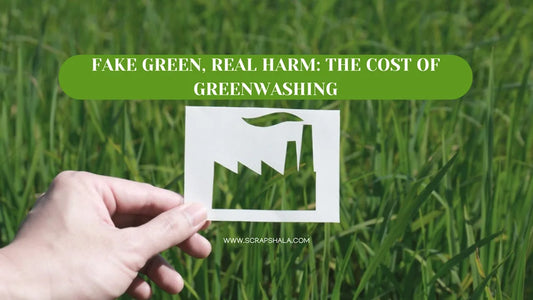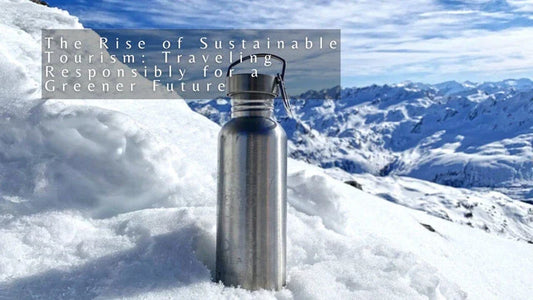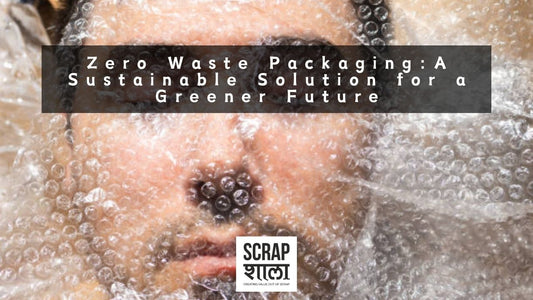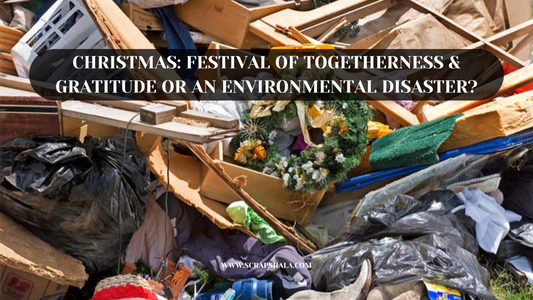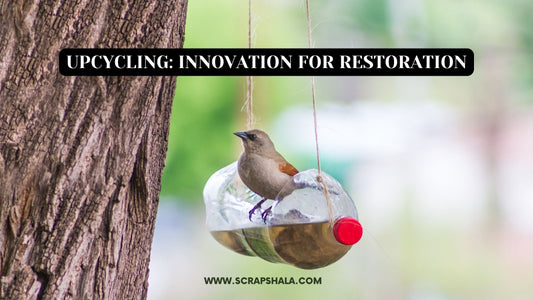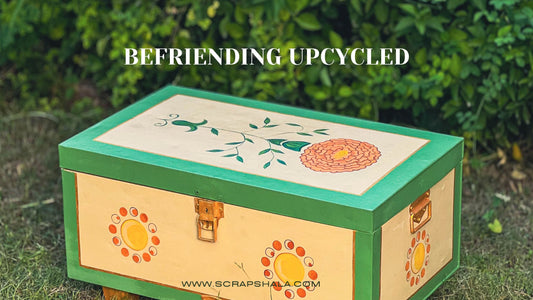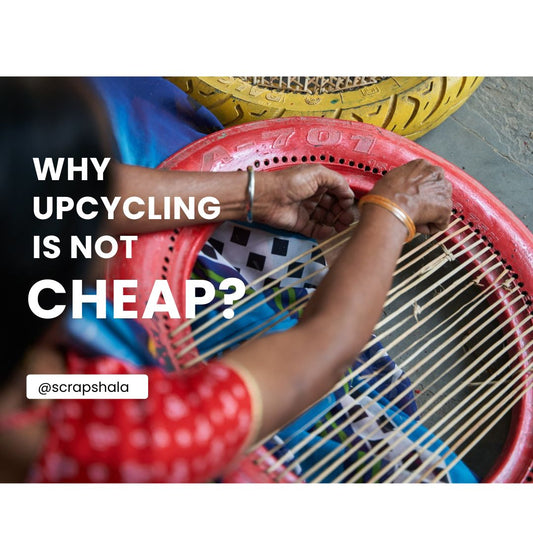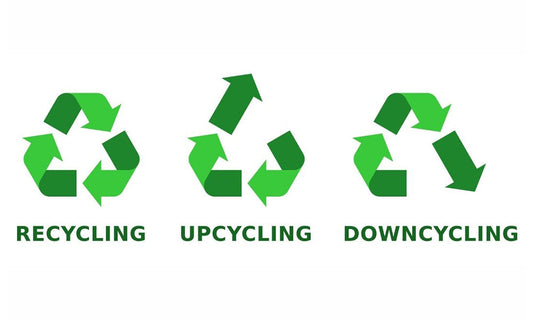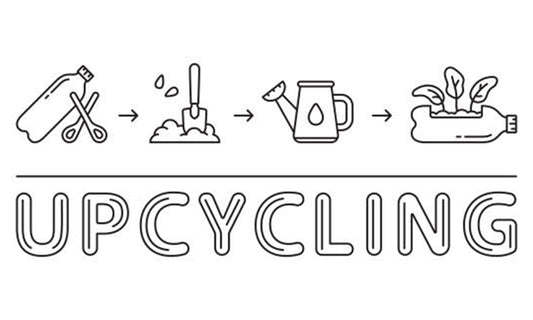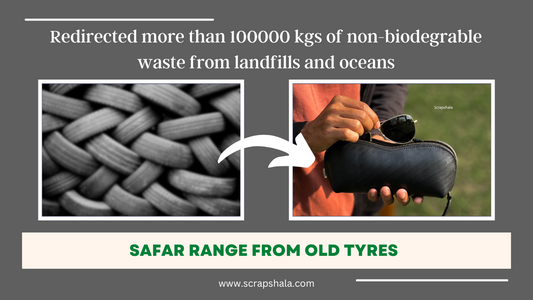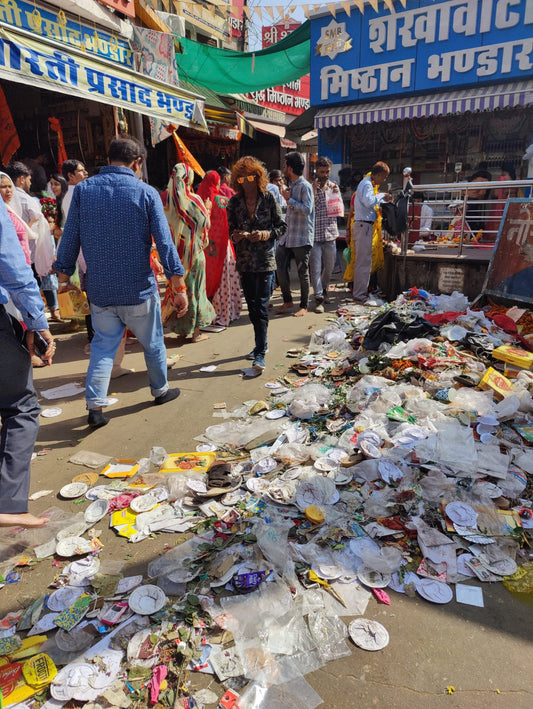- Shikha Shah, Kaushik Kumar, Ananya Joshi & Shruti Srivastava
Greenwashing? Does this ring a bell?
Not every “eco-friendly” title claim is as green as it seems – it’s called Greenwashing and by this practice, millions are being duped in the name of sustainability.
Greenwashing (also known as “Green Sheen”) refers to a situation where a company makes misleading environmental claim, such as Volkswagen’s 'Dieselgate' scandal, where the company, falsely marketed its cars as eco-friendly while cheating in emission tests misleading customers into believing their products or services are eco-friendly.
The term 'greenwashing' itself was coined long back in 1986 by environmentalist Jay Westerveld, who criticized the hospitality industry’s practice of expecting guests to reuse the towels while doing very little to reduce environmental impact elsewhere in their businesses. But in today’s day & age greenwashing has become more sophisticated, with many corporations using it as a long term and smart marketing strategy.
This article is an attempt to help you understand greenwashing, its impact on consumer behavior and our environment. Stay with us till the end to avoid getting greenwashed and make an informed decision while shopping.

Some famous examples of Greenwashing among global brands are as follows:
- H&M: Their Conscious Collection was exposed for vague and unverifiable sustainability claims.
- Nestlé: Accused of greenwashing for labelling plastic bottles as “sustainably sourced” while contributing to plastic pollution.
- Chevron: Ran eco-themed ads while actively damaging the environment—classic case of contradiction.
- Bisleri “Eco-Friendly” Bottles: Bisleri marketed its bottles as eco-friendly and recyclable, implying reduced environmental impact. However, most Indian cities lack the proper infrastructure to collect and recycle PET bottles, leading to high plastic waste. Environmental groups accused the brand of shifting responsibility to consumers without solving the actual issue of plastic pollution.
- Indian Apparel Brands – “Organic Cotton” Claims: Several Indian textiles and D2C fashion brands use vague labels such as “eco-friendly”, “made from organic cotton”, or “low water use”. Investigations by NGOs revealed that in many cases, there was no certification from GOTS (Global Organic Textile Standard) or traceable sourcing. Consumers were thus paying a premium for products that may not be as green as advertised.
- Mahindra Electric – Greenwashing in EV Narratives: Lack of accountability leads to continued emissions of greenhouse gases and toxic waste. Research from EMSOL suggests that manipulated environmental data contributes significantly to greenwashing which again makes it difficult to track genuine sustainability efforts.
In India, companies are not far behind in greenwashing by promoting ‘eco-friendly’ versions of everyday products—such as biodegradable cutlery, organic detergents, herbal cosmetics, green cement, and electric appliances. However, many of these products are branded as sustainable without sufficient data or third-party verification, misleading consumers.

For example:
- Plastic alternatives made of mixed polymers are often marketed as compostable but are non-biodegradable under normal conditions. And will remain harmful to the ecosystem for long.
- “Herbal” cosmetic products, shampoo, soaps, dyes etc. may still contain synthetic preservatives but are marketed as 100% natural. This happens due to the loopholes in composition description.
- Green building materials like eco-cement are marketed with unverified emission reductions and most of the times, doesn’t even consider the emissions caused during the production processes.
Impact of Greenwashing on the environment:
The impact of Greenwashing on the environment is very complex and harmful as it spreads wrong information to customers who are conscious about sustainability. It also slows down genuine sustainability efforts in society.
 Key Statistics on Greenwashing in India
Key Statistics on Greenwashing in India
- Prevalence of Misleading Claims: A study by the Advertising Standards Council of India (ASCI) found that 79% of green claims made by organizations were exaggerated or misleading.
- Consumer Awareness and Trust: According to a YouGov market research study, 71% of Indian consumers have encountered greenwashing, with 60% expressing concern over the same.
- Corporate Greenwashing: A study analyzing companies listed under the NIFTY 50 index revealed that 54% of the 48 companies sampled were engaged in greenwashing activities. The energy sector exhibited the highest greenwashing scores, while the FMCG sector had the lowest.
- Advertising Violations: In 2021, the ASCI processed complaints against 116 advertisements for potential violations related to misleading environmental claims.
Let’s learn impact of Greenwashing on consumers and the environment:
1. Delayed Environmental Progress
- Greenwashing distracts world from meaningful actions needed to address climate change, pollution, and biodiversity loss. According to the United Nations, greenwashing misleads consumers and prevents urgent climate action by creating a false impression of progress. According to a report by ESG data and research firm RepRisk, greenwashing incidents constituted 25% of climate - related risk in September 2022 to September 2023, up from 20% during the same period in the previous year.
- Resources are funneled into superficial or misleading sustainability initiatives rather than genuine solutions.
2. Increased Resource Depletion
- Greenwashed products often continue to rely on unsustainable resource extraction and manufacturing processes, exacerbating environmental degradation.
- Consumers may unknowingly purchase harmful products, thinking they are making an eco-conscious choice. According to Kantar, 52% of people globally have either seen or heard brands making false claims about sustainable actions taken by them.
3. Perpetuation of Pollution
- Misleading claims encourage practices that may still produce significant pollution but are marketed as eco-friendly.
- Lack of accountability leads to continued emissions of greenhouse gases and toxic waste. Research from EMSOL suggests that manipulated environmental data contributes significantly to greenwashing which again makes it difficult to track genuine sustainability efforts.
4. Consumer Misinformation
- Greenwashing creates confusion and erodes trust, making it harder for consumers to identify truly sustainable products. For example, Keurig, a beverage brand started advertising its K- cup pods as recyclable which led to confusion among consumers and also greenwashing allegations for the brand.
- Many influencers promote ‘eco-products’ based on brand sponsorships, without verifying the authenticity of sustainability claims. This adds to the spread of greenwashing.
- When consumers discover they’ve been misled, it not only erodes the trust in the brand but also makes them skeptical of truly sustainable products. This prevents the widespread adoption of genuinely eco-friendly practices and products, slowing down collective environmental impact.
5. Harm to Ecosystems and Wildlife
- Misleading practices can result in improper dumping of falsely-claimed sustainable products and its packaging in forests, rivers and landfills, leading to habitat destruction and harm to wildlife.
- A notable example includes Hindustan Unilever Limited, which faced legal action in 2011 for falsely advertising its Surf Excel Easy Wash detergent as "100% natural."
6. Undermining of Real Sustainability Efforts
- Greenwashing overshadows the efforts of genuinely sustainable businesses and organizations, making it harder for them to compete.
- It discourages systemic change by allowing companies to continue harmful practices while projecting a false eco-friendly image.
7. Amplification of Climate Change
- Greenwashing perpetuates industries and practices that contribute to carbon emissions, slowing down the global transition to net-zero emissions.
- It creates a false sense of security among consumers and policymakers, delaying climate actions.
Combating greenwashing requires a collective effort, starting with the consumers who must stay informed, ask questions, and support transparent brands. Businesses should take real actions and not just hollow promises on sustainability, and policymakers must enforce stricter regulations to hold Green washers accountable.

How to know about genuine sustainable brands or products
Firstly, it is important to understand what sustainable brands are, and which authorities are responsible for verifying genuine sustainability claims.
Sustainable brands are the companies that prioritize environmental and social responsibility throughout all processes from sourcing raw material to placing their products in retail store or doing door-step delivery to consumers.
Most sustainable brands are just not selling eco-friendly products they are also taking one step further to integrate sustainability into their core values and mission to succeed their sustainable company.
Important organizations that govern the sustainability policies in India and check greenwashing?
· Advertising Standards Council of India (ASCI): Regulates environmental advertising and flags misleading or exaggerated green claims; flagged 116 such ads in 2021.
· Central Pollution Control Board (CPCB): Enforces environmental standards and takes action when false sustainability claims lead to pollution or ecological harm.
· Ministry of Environment, Forest and Climate Change (MoEFCC): Formulates national environmental policies, regulations, and sustainability frameworks for industries.
· Bureau of Indian Standards (BIS): Certifies eco-labels and verifies environmental claims in products like plastics, paints, and appliances.
· National Green Tribunal (NGT): A quasi-judicial body that penalizes environmental violations, especially when companies pollute while falsely promoting sustainability.
What makes a brand sustainable?
Transparency: The biggest clue to find if a brand is genuinely sustainable lies on the true information about the company’s claims online. If the brand’s website lacks sourcing, manufacturing, and supply chain practices, chances are that they’re not as eco-friendly as they claim. Honest & transparent brands will always showcase their transparency with displaying the sources from where their materials come from, how they are produced, and who is involved in the whole process.
Scientific and data-based approach: Genuine sustainable brands work with a scientific approach and their sustainability claims are data-driven, transparent and accessible to the audience.
Ethical labor practices: Sustainable brands ensure fair wages and safe working conditions for their employees. Ensuring a fair compensation for the labor and efforts of the workers, particularly local communities associated with the brand’s operations. It also works to restore local ecosystem surrounding their production units and strengthens livelihood for local community.
Engage and educate: Green businesses take inputs at multiple level from vendors, employees to consumers, in order to ensure relevance and effectiveness of their green practices. They ensure to respond to concerns of all stakeholders about their green claims. They educate consumers about sustainability practices and allocate company’s resources for sustainable initiatives which might not always be a profit-making exercise.
Third-party audits: Green businesses seek third-part verification, audit the supply chain to avoid greenwashing at supplier level, take steps to minimize and track their carbon footprint at each step.
There are several big companies that are moving ahead in this direction to reduce carbon footprint. According to reports the top five in this list are Microsoft, Ford, Apple, Amazon, Cardano.
Current trend suggests smaller homegrown brands to be more sustainable than large corporations for reasons such as smaller carbon footprint, focus on local sourcing, and often more transparent and ethical practices. They tend to produce in smaller batches, reducing waste and overproduction.
Making informed decisions while shopping sustainable?
Here are some key points to find out. They are as follows:
· Do some research: Take a moment and research about the brand’s background and it’s past commitments to sustainable practices in their businesses. Check out their website, brief information about their brand’s sustainability values and practices.
· Certifications matter: These small logos can be good sign that brand is truly sustainable. Trusted eco - certifications like Fair Trade, FSC, B Corp, Global Organic Textile Standard indicate genuine commitment towards sustainable practices. Although for many sustainable practices such as upcycling, such certifications are not available in India.
· Check their transparency: If a brand is transparent about its sourcing, supply chain and manufacturing practices, that’s a promising sign. Green businesses also educate consumers about the after-life of the product. Such as Scrapshala, where you can learn how to handle the product during discard on their online store.
· Minimal packaging: Sustainable brands always use minimal or zero-waste packaging, supporting reusability and recyclability. For example, ScrapShala uses upcycled newspaper pouches and carry bags in their retail stores as an eco-friendly packaging alternative, reducing plastic waste and promoting sustainability.
· Positive reviews: Are the reviews positive? Do the testimonials from customers regarding the brand’s sustainability efforts and product quality, sound legitimate enough to affirm the brand’s commitment to sustainability?
· Community Engagement: If the brand is actively engaged with its community in informing, educating or responding to their queries, it’s a sign that the brand cares and it is genuine.
· Long term commitment: Does the brand meet long-term commitment towards sustainability in its messaging and actions.
At Scrapshala, we take the honor of being one of the genuine homegrown sustainable brands committed to make a true impact on consumer behavior and the environment through ethical practices and eco-friendly innovation by upcycling pre-existing materials into new functional products. From upcycling the waste into handcrafted products to ensuring fair wages for our artisans, every single step of our process relates to our mission to create greener and more responsible future.
Each product sold at Scrapshala directly allocates 30% revenue to labor and artisans involved in making of that product.
Scrapshala is a truly committed to sustainability with a vision to create better life for people and planet through innovation from pre-existing material. It has also been featured on Shark Tank India, highlighting its innovative approach to sustainability and recognition in the eco-friendly business space.
We believe that true sustainability goes beyond words, and through our continuous transparent practices, we continue to transform what it means to be an authentic eco-friendly brand.
Sources:
https://blog.cleanhub.com/greenwashing-examples#:~:text=One%20of%20the%20most%20famous,tests%20and%20modifying%20engine%20software.
https://www.un.org/en/climatechange/science/climate-issues/greenwashing
https://www.esgdive.com/news/greenwashing-rising-report-rep-risk-social-washing-sustainability/696289/
https://www.kantar.com/inspiration/sustainability/the-impact-of-greenwashing-and-social-washing-on-brands#:~:text=Get%20more%20Inspiration-,Mistrust%20and%20rejection%3A%20The%20impact%20of%20greenwashing%20and%20social%20washing,sustainable%20actions%20taken%20by%20brands.
https://emsol.io/greenwashing-or-bad-data/
https://www.techtarget.com/sustainability/feature/Examples-of-greenwashing-claims#:~:text=3.-,Keurig,which%20led%20to%20greenwashing%20allegations.
https://www.fairatmos.com/blog/5-giant-companies-that-are-going-carbon-neutral
https://www.vistaprint.com/hub/eco-friendly-brands?srsltid=AfmBOopw1v19rbqlCLCmOCtDObXWGF7UpwK3flZHtiAlYidMih2C-6YR
https://scrapshala.com/pages/awards-recognitions
https://scrapshala.com/pages/news
https://scrapshala.com/pages/impact-we-create
https://timesofindia.indiatimes.com/blogs/adi-bytes/green-with-stupefaction/
https://carbonmandal.com/going-green-a-reality-or-a-facade/
https://www.cag.org.in/blogs/how-indias-greenwashing-guidelines-can-protect-consumers
https://mywellnessme.com/how-to-avoid-greenwashing/
https://m.economictimes.com/industry/services/advertising/hindustan-unilever-ltd-to-pay-rs-27-lakh-for-misleading-customers/articleshow/52945789.cms
https://carbontrail.net/blog/greenwashing-what-is-greenwashing-how-it-works-examples/





